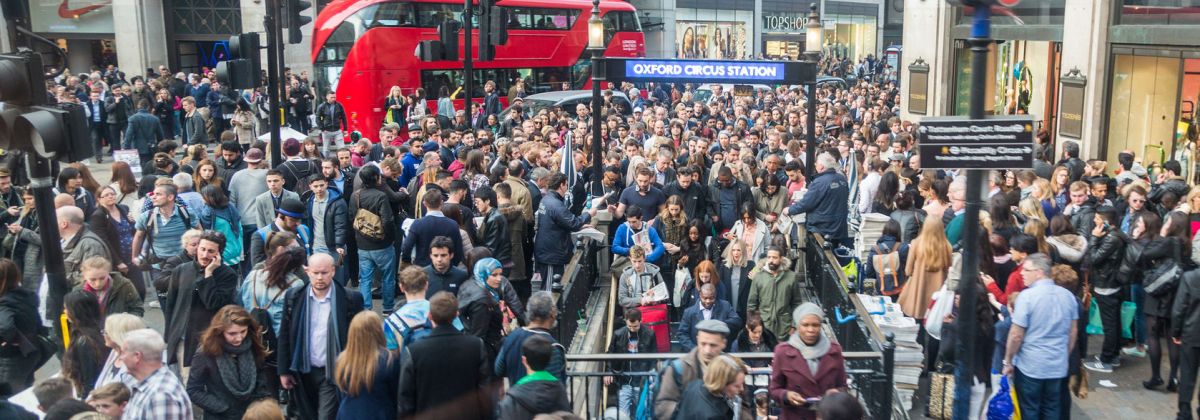
22 May, 2024
1. There is little doubt that the next set of official migration statistics to issue on 23rd May will confirm that the scale and pace of immigration has run out of control and that the post-Brexit immigration system must bear the bulk of the blame. The only effective way forward is now to impose a cap to ensure net migration is no more than 100,000 a year. This would have wide public support and might avoid the serious economic and social strains that are very likely to arise from the present chaos.
2. Much press attention has been focussed on the asylum system, which is clearly in urgent need of reform, but the current scale of net migration is many times greater and about 20 times the rate of illegal Channel-crossers. Debates around the Rwanda Scheme should not be a distraction from reducing legal migration, which has been the main driver of mass migration over many years, and which will have a transformative impact on our society.
Graph 1: Net migration to the UK, 2000-2022[1]

3. We now find that the nearly 8 million increase in the UK population in the 20 years preceding the last census in 2021 was 84% due to immigration. The latest ONS projections show a UK population increase of 6.6 million by 2036 of which 6.1 million (92%) will be due to immigration.[2] Population increase on such a scale is unprecedented in our history and will have a major impact on the economy, society, and culture of the UK.
4. The impact on demand for housing and public services, especially the NHS, is already huge. Fifteen new Birminghams would be needed to accommodate immigration-driven population growth should uncapped migration continue at its current levels.[3] This will mean building something like 6,700 schools, 2,600 GP surgeries, and 8,000 miles of road by 2046. We will also need to build over half a million new homes a year.[4]
5. The social effects of millions of arrivals from different cultures are already considerable. Numbers matter. We find ourselves unable to assimilate migrants already here, let alone the accelerating rates of migration that are now being forecast. Challenges include multilingualism, reduced social trust, and sectarian conflict. We can see this clearly demonstrated by the current widespread antisemitism at extensive protests. Research has found that 46% of British Muslims sympathise with Hamas and 32% want Sharia law enforced in the UK. Too many new arrivals are not assimilating into British culture or accepting British values.[5]
6. Opinion polls now show that some 63% of the public believe immigration is too high.[6] As much as 52% of the public want immigration reduced.[7] But the public are simply not aware of the scale of the problem. Most people believe that 70,000 migrants entered the country last year, which is only about one tenth of the actual level. When asked, 80% of respondents want migration below 100,000 per year.[8] They are certainly not aware that, if current levels of migration were allowed to continue, a child born today to an indigenous British couple would be in a minority in the country of his or her parents by the time they reached their forties.
7. British society is founded upon the shared heritage, values, rich history, and culture of the British people. Its future stability, economic wellbeing and cohesion are dependent on manageable levels of immigration which now drive unprecedented population growth. Massive levels of immigration from disparate parts of the world, if left unchecked, will result in a fractured society and increasing tensions between different religious and cultural groups, many from conflict-ridden parts of the world.
8. The way forward is a cap on overall numbers. Under the Conservative-Liberal Democrat Coalition the UK introduced its own cap on higher-skill visas (20,700 p.a.) for non-EU nationals. It worked. The cap was never breached and played a significant part in non-EU migration falling to its lowest levels since the 1990s. Caps have also been used with varying degrees of success in the United States, Canada, and Australia.
9. At present there is no effective control of immigration. The system has, in effect, been deliberately delegated to employers and universities with no limit on the numbers they can bring. This has to change. The government must take back decision making and impose a cap on immigration to be determined at the start of each parliamentary term. This should be set at a level to ensure net migration is less than 100,000 a year. A cap is the simplest and most effective means of control. In short: no cap, no control.
Conservative Manifesto 2010 (p.21)
we will take steps to take net migration back to the levels of the 1990s - tens of thousands a year, not hundreds of thousands.
Conservative Manifesto 2015 (p.29)
keep our ambition of delivering annual net migration in the tens of thousands, not the hundreds of thousands.
Conservative Manifesto 2017 (p.54)
But with annual net migration standing at 273,000, immigration to Britain is still too high. It is our objective to reduce immigration to sustainable levels, by which we mean annual net migration in the tens of thousands.
Conservative Manifesto 2019 (p.20)
overall numbers will come down.
Net migration for calendar 2022 was 745,000.